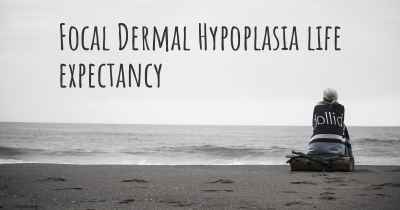What is the history of Focal Dermal Hypoplasia?
When was Focal Dermal Hypoplasia discovered? What is the story of this discovery? Was it coincidence or not?

Focal Dermal Hypoplasia (FDH), also known as Goltz syndrome, is a rare genetic disorder that primarily affects the skin, skeleton, eyes, and face. It is characterized by a wide range of symptoms and can vary in severity from person to person. FDH is caused by mutations in the PORCN gene, which is responsible for the production of a protein essential for embryonic development.
The history of FDH dates back to the early 20th century when a German dermatologist named Robert Goltz first described the condition in 1962. He reported a case of a young girl with multiple abnormalities, including skin lesions, skeletal abnormalities, and eye defects. Goltz recognized that these features were distinct and named the condition "focal dermal hypoplasia."
Over the years, more cases of FDH were reported, and researchers began to investigate the underlying cause of the disorder. In the late 1990s, scientists discovered that FDH is caused by mutations in the PORCN gene. This gene is located on the X chromosome, which means that FDH primarily affects females. However, there have been a few reported cases of affected males with a more severe form of the condition.
The PORCN gene is responsible for producing a protein called porcupine, which plays a crucial role in embryonic development. Porcupine is involved in the Wnt signaling pathway, which regulates the growth and development of various tissues and organs in the body. Mutations in the PORCN gene disrupt this pathway, leading to the characteristic features of FDH.
The symptoms of FDH can vary widely from person to person. The most common features include skin abnormalities, such as atrophic or thin patches, streaks, or papillomas. These skin lesions can be present at birth or develop later in life. Skeletal abnormalities are also common and can affect the hands, feet, fingers, and toes. Individuals with FDH may have missing or fused fingers, toes, or bones. Eye abnormalities, such as coloboma (a gap or hole in the structures of the eye), strabismus (crossed or misaligned eyes), and cataracts, are also frequently observed.
Other symptoms that may be present in individuals with FDH include dental abnormalities, hearing loss, intellectual disability, and abnormalities of the digestive and urinary systems. The severity of these symptoms can vary, and some individuals may have mild manifestations of the disorder, while others may be more severely affected.
Diagnosing FDH can be challenging due to the wide range of symptoms and the rarity of the condition. A clinical evaluation, including a thorough examination of the skin, skeleton, and eyes, is typically performed. Genetic testing can confirm the diagnosis by identifying mutations in the PORCN gene.
Currently, there is no cure for FDH. Treatment is focused on managing the symptoms and improving the quality of life for affected individuals. This may involve a multidisciplinary approach, including dermatologists, orthopedic surgeons, ophthalmologists, and other specialists. Treatment options may include surgical interventions to correct skeletal abnormalities, eye surgeries, and supportive therapies to address specific symptoms.
Research into FDH is ongoing, with scientists working to better understand the underlying mechanisms of the disorder and develop potential targeted therapies. Genetic counseling is also an essential aspect of managing FDH, as it can help individuals and families understand the inheritance pattern and make informed decisions about family planning.
In conclusion, Focal Dermal Hypoplasia is a rare genetic disorder that affects various systems in the body. It was first described by Robert Goltz in the 1960s, and the underlying cause was later identified as mutations in the PORCN gene. The symptoms of FDH can vary widely, and there is currently no cure for the condition. Ongoing research aims to improve our understanding of FDH and develop better treatment options for affected individuals.








